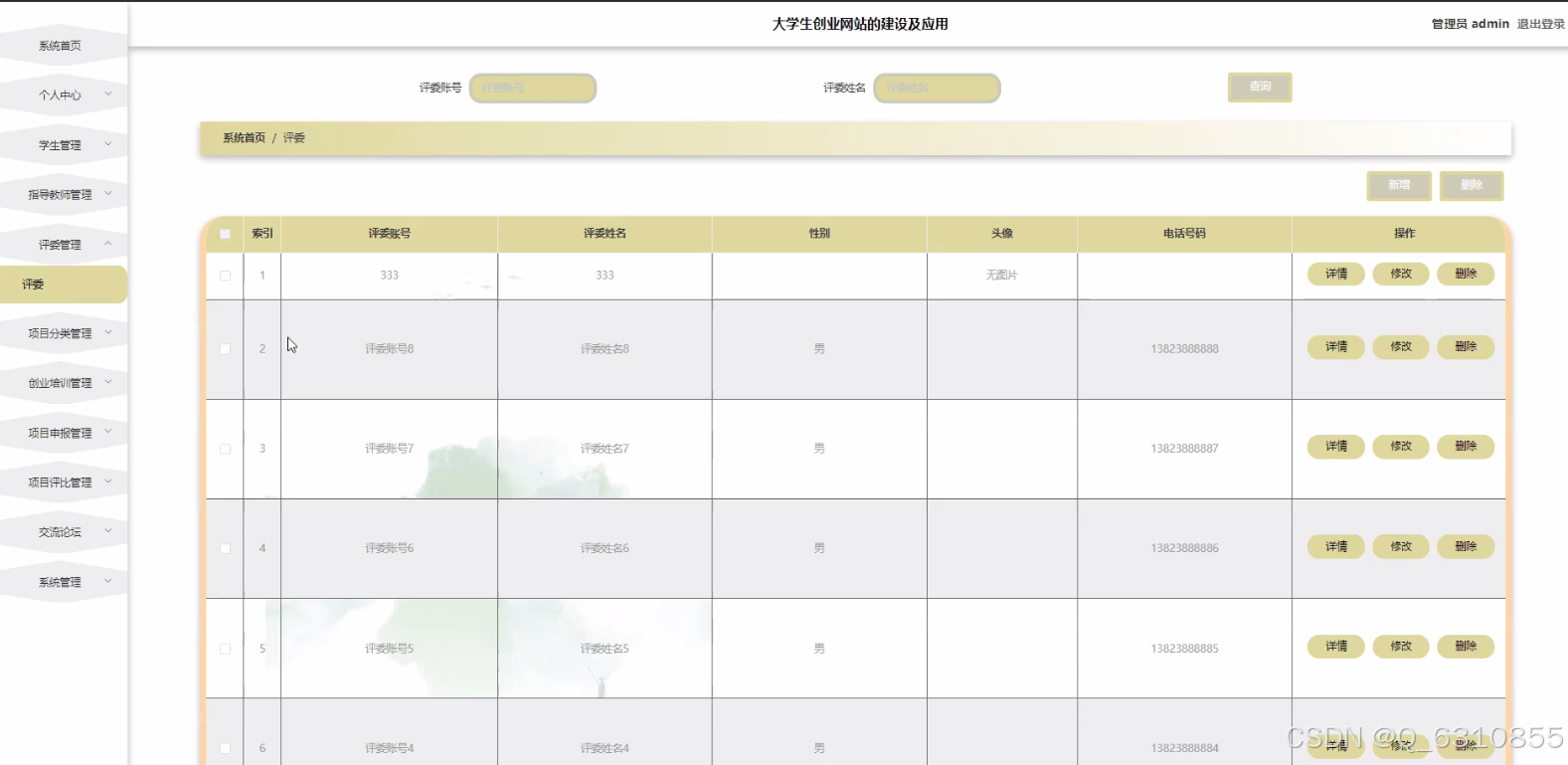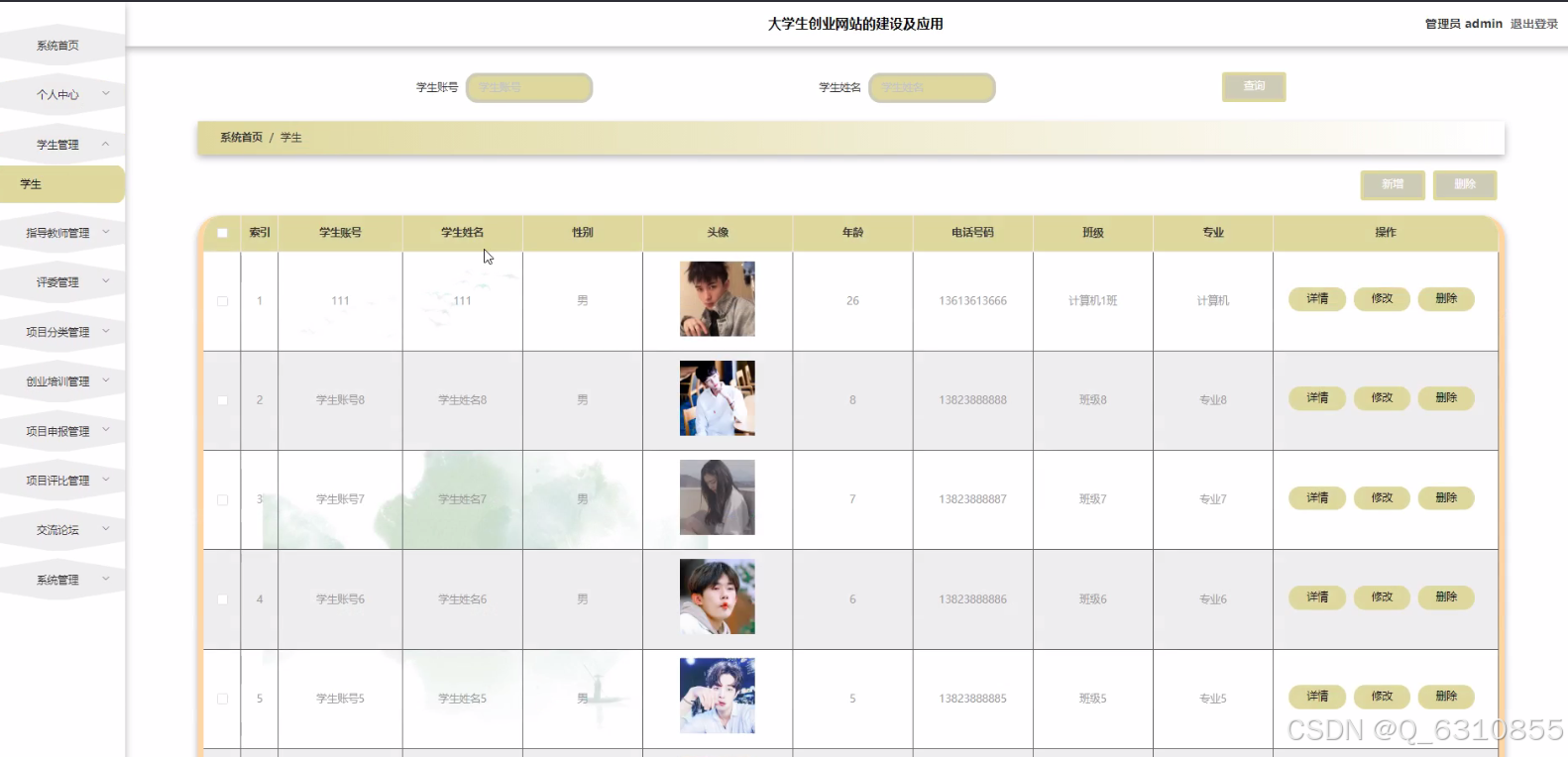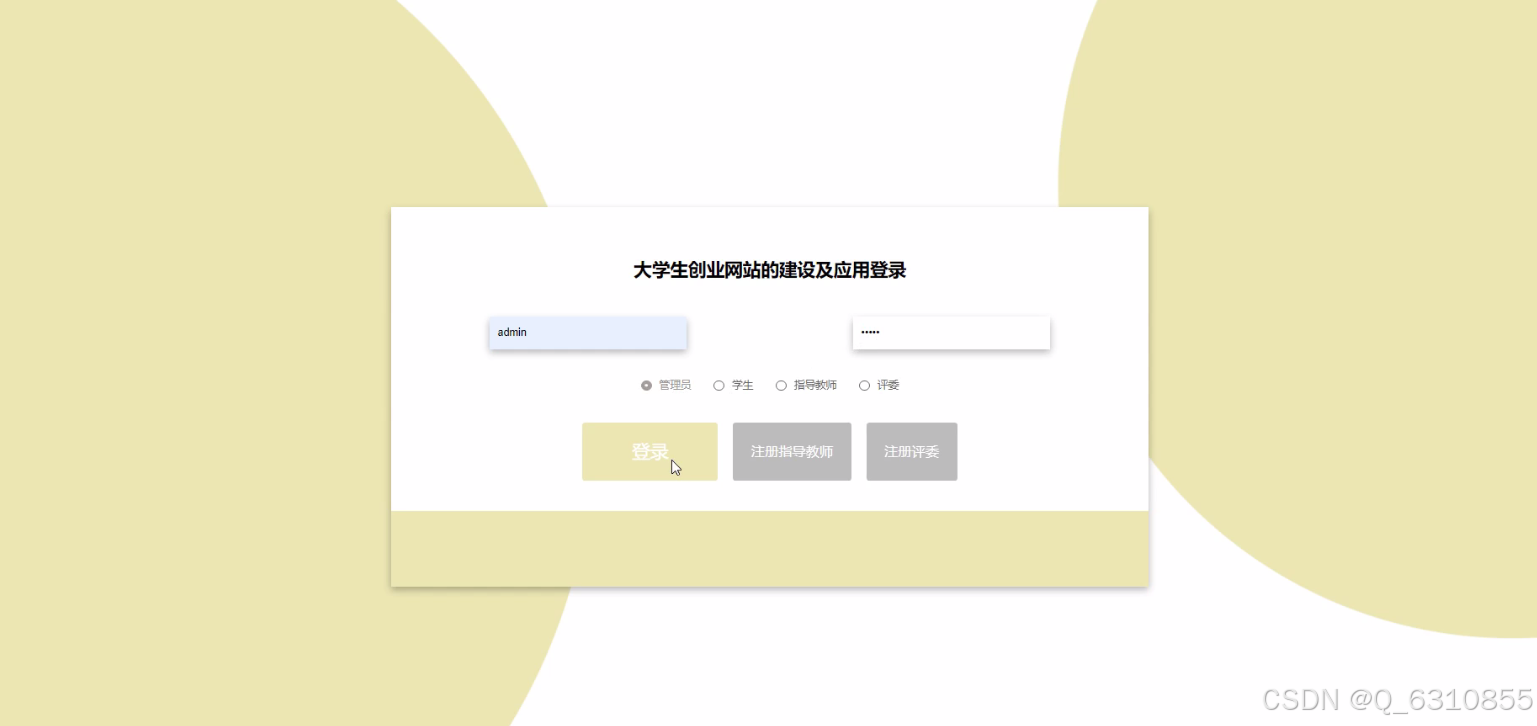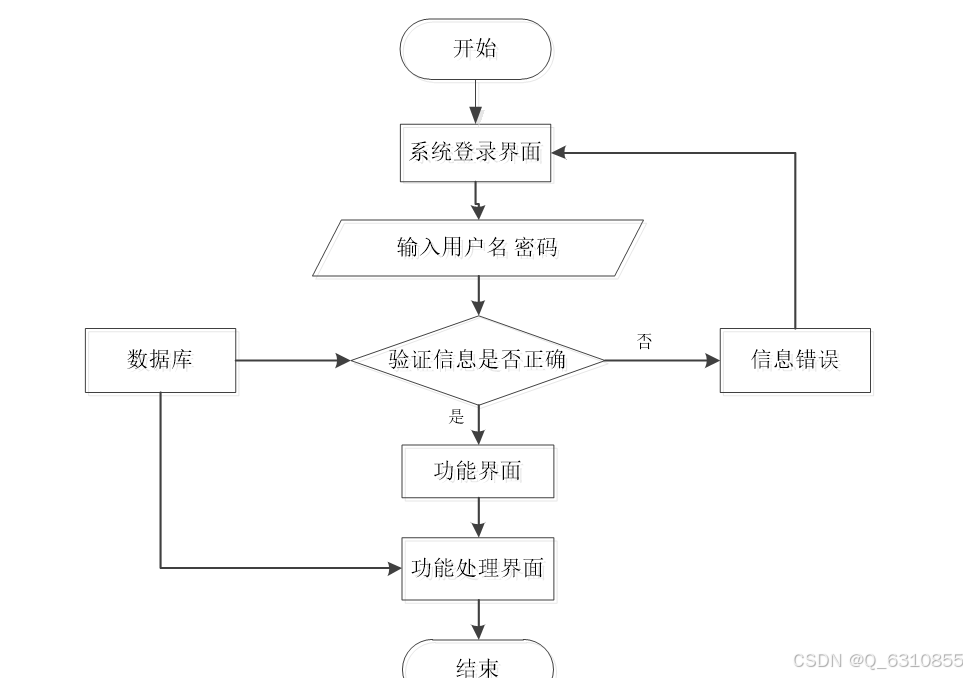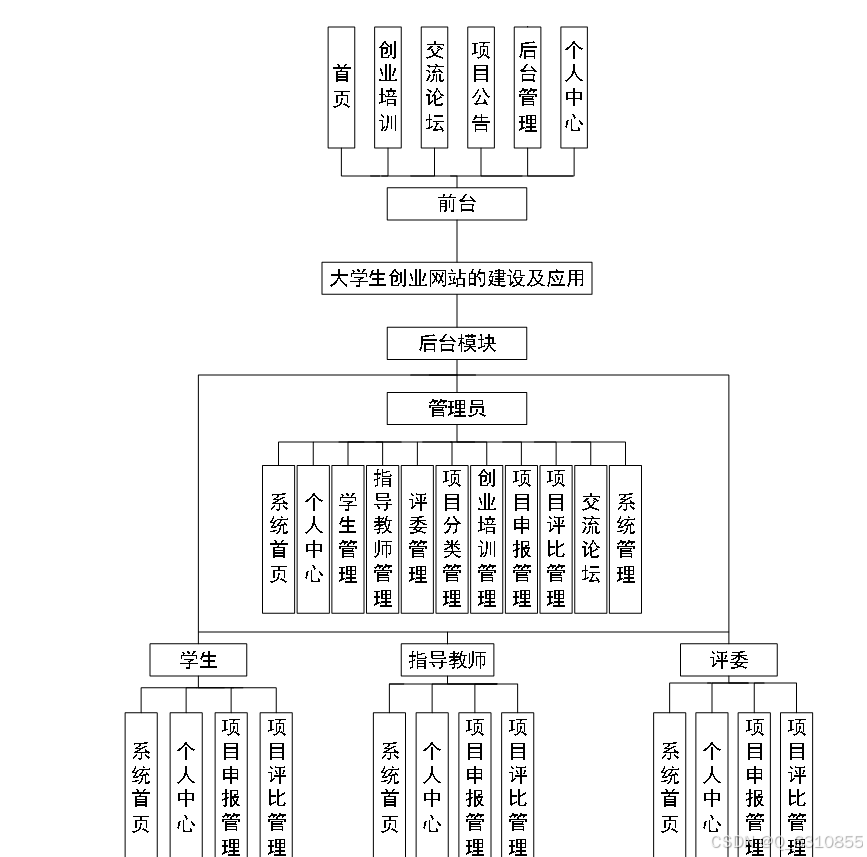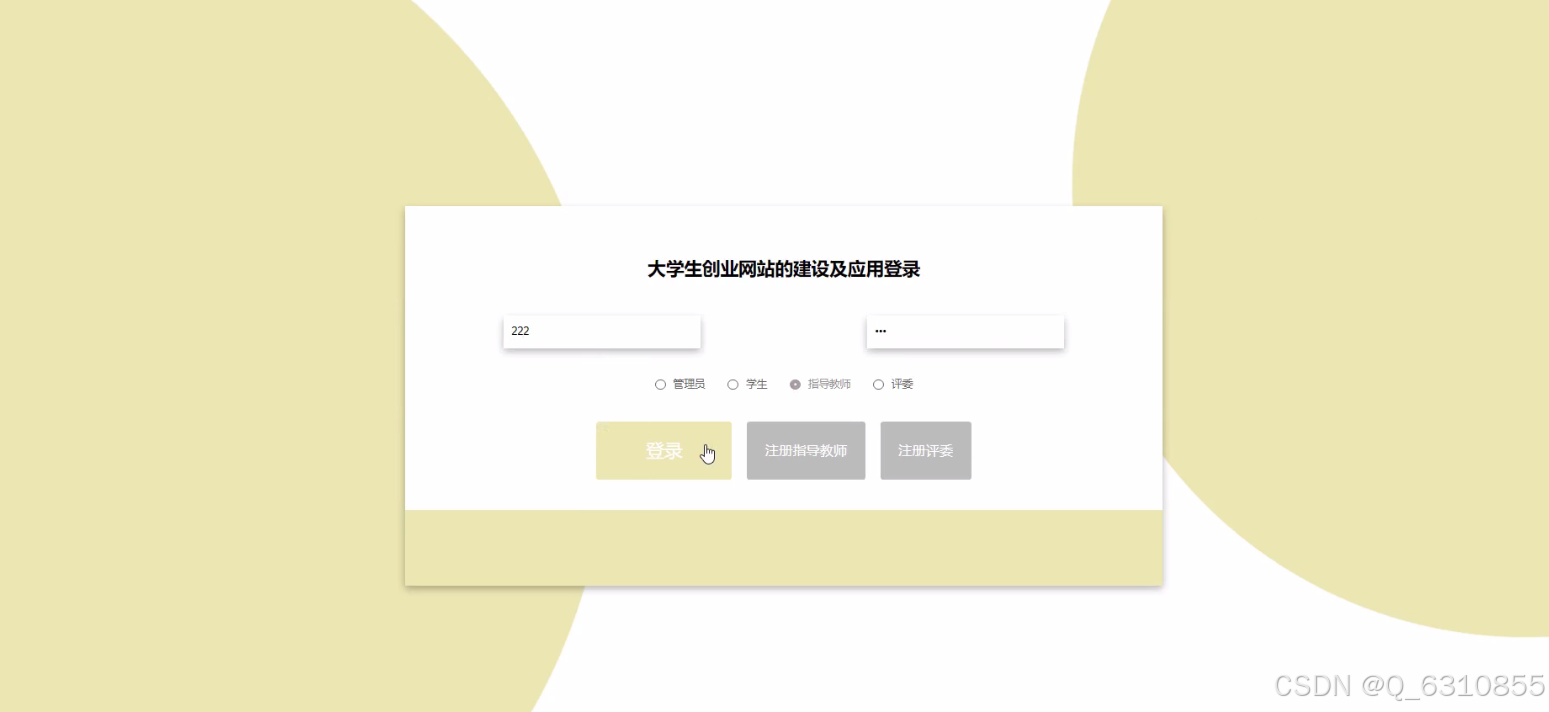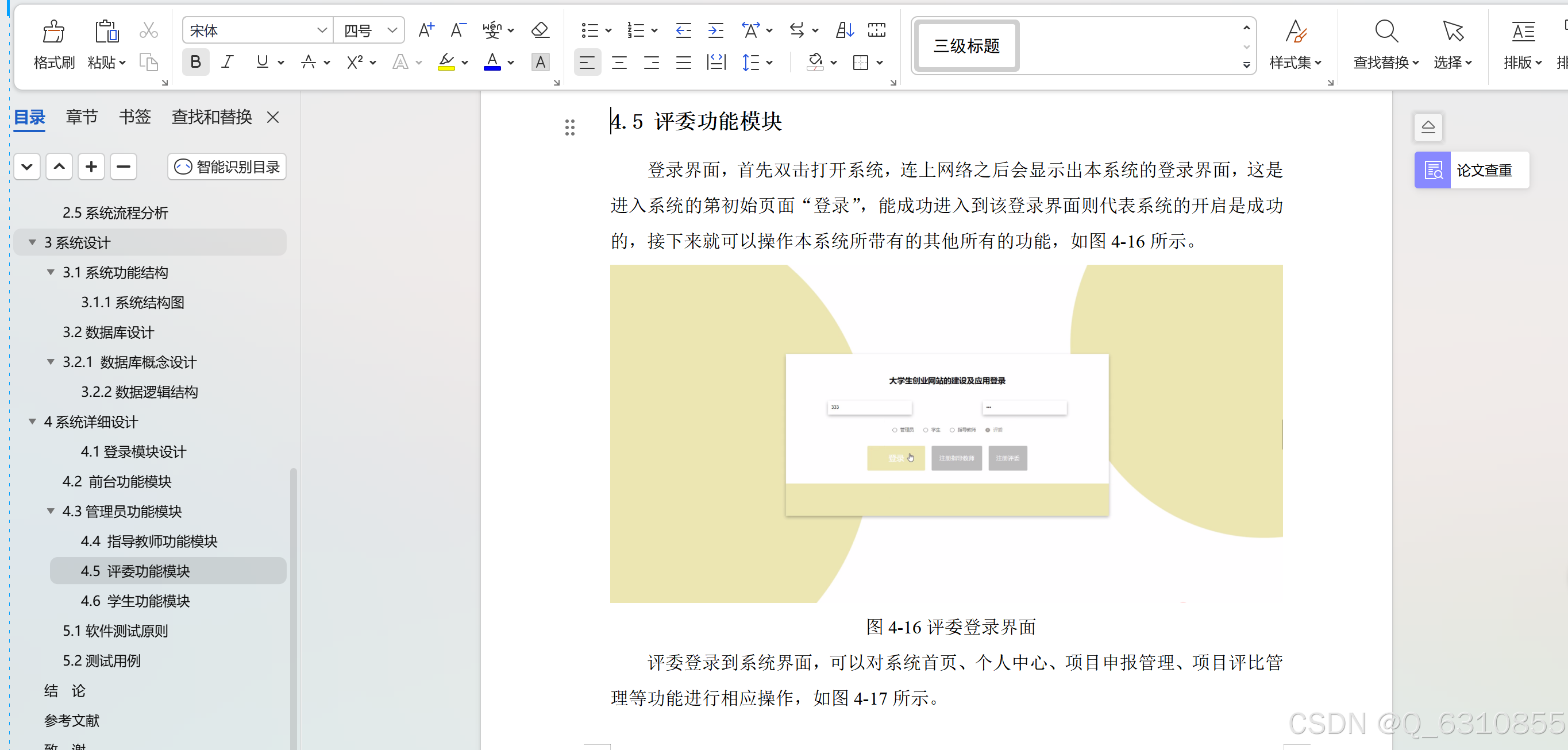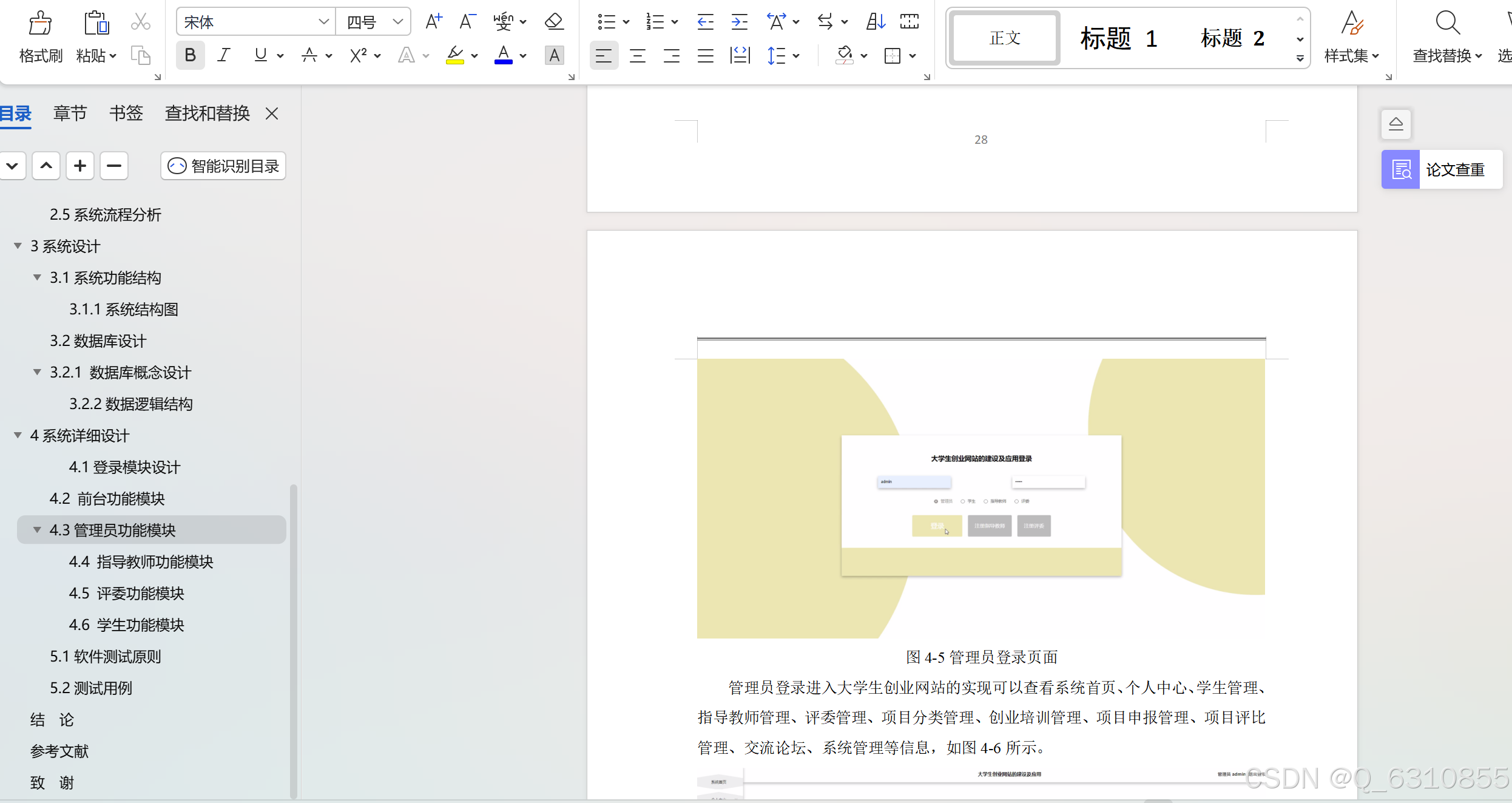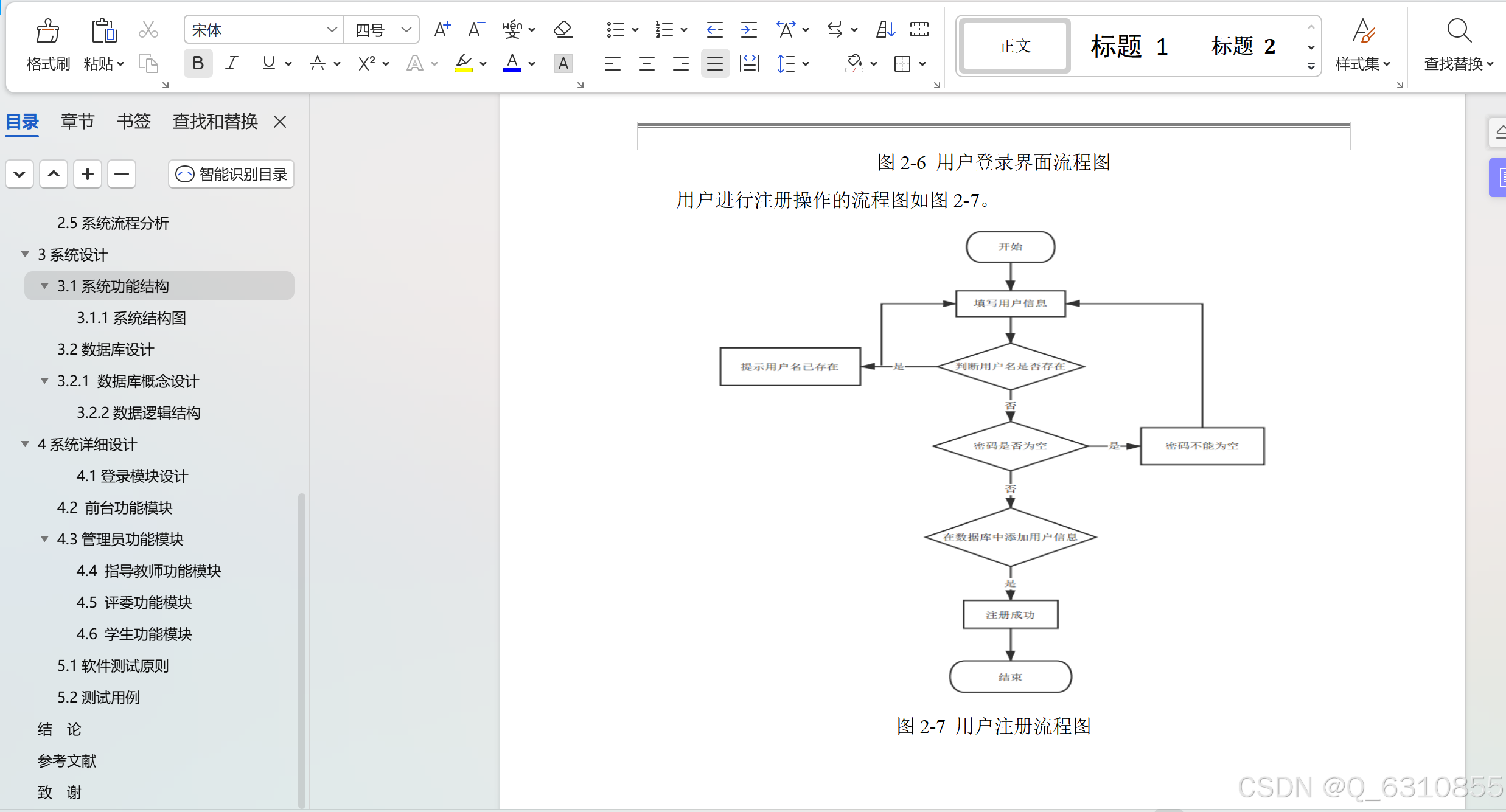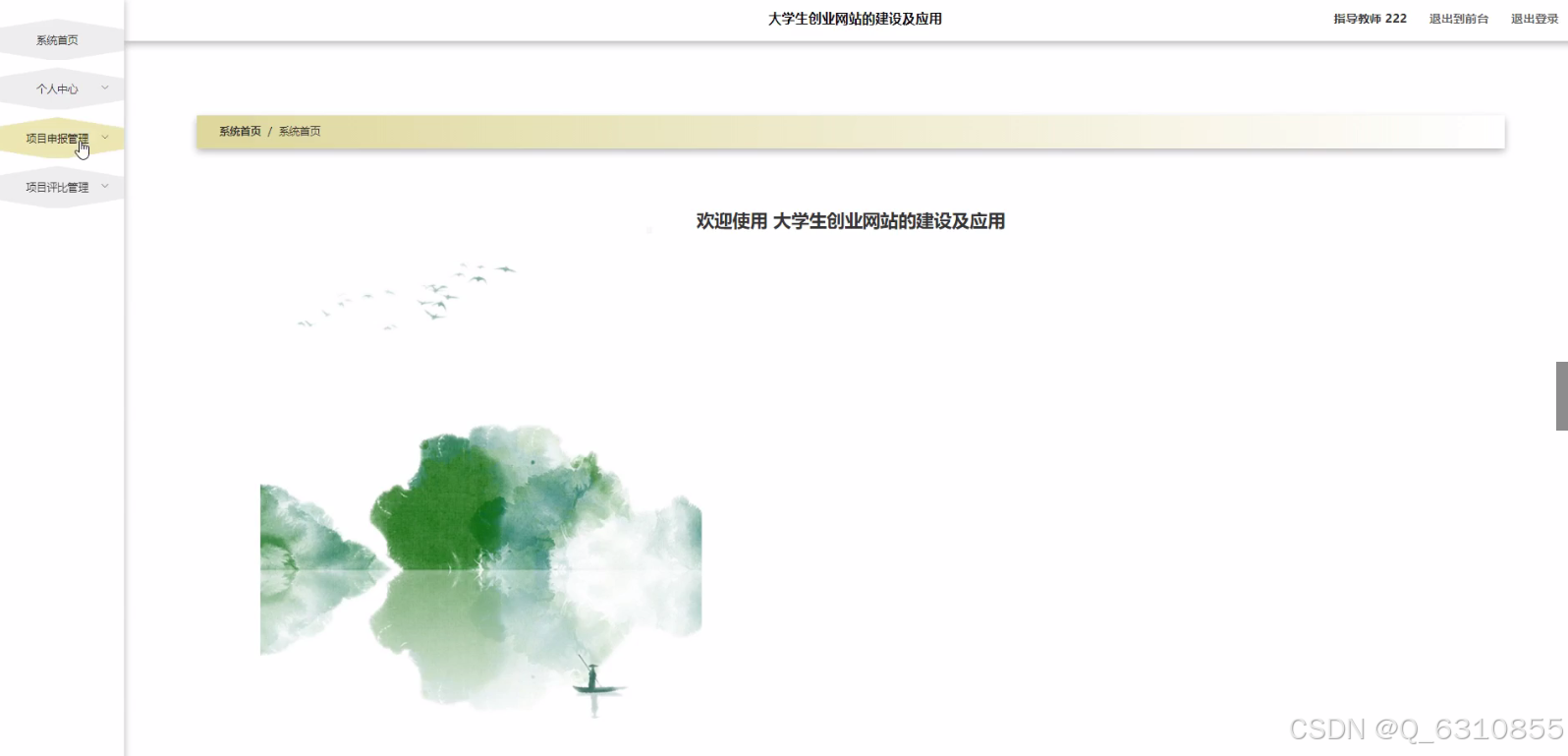文末获取资源,收藏关注不迷路
项目介绍
大学生创业网站的目的是让使用者可以更方便的将人、设备和场景更立体的连接在一起。能让用户以更科幻的方式使用产品,体验高科技时代带给人们的方便,同时也能让用户体会到与以往常规产品不同的体验风格。
与安卓,iOS相比较起来,大学生创业网站在流畅性,续航能力,等方方面面都有着很大的优势。这就意味着大学生创业网站的设计可以比其他系统更为出色的能力,可以更高效的完成最新的创业培训、交流论坛、项目公告等功能。
此系统设计主要采用的是JAVA语言来进行开发,采用Spring Boot框架技术,框架分为三层,分别是控制层Controller,业务处理层Service,持久层dao,能够采用多层次管理开发,对于各个模块设计制作有一定的安全性:数据库方面主要采用的是MySQL来进行开发,其特点是稳定性好,数据库存储容量大,处理能力快等优势:服务器采用的是Tomcat服务,能够提供稳固的运行平台,确保系统稳定运行。通过大学生创业网站来提升本课题的各项功能的工作效率,提供了一个多样功能,具有良好实用性的大学生创业网站。
系统结构图可以把杂乱无章的模块按照设计者的思维方式进行调整排序,可以让设计者在之后的添加,修改程序内容的过程中有一个很明显的思维方向。同时结构图还可以让设计者以外的其他人更直观的看出整个系统的设计理论和设计过程。让系统的设计变的更直观。该系统的功能架构图如图3-1所示:
技术介绍
1、管理员账号:abo 密码:abo
2、开发环境为Eclipse/idea,数据库为mysql 使用java语言开发。
3.配置好Tomcat并点击启动按钮即可运行
4.数据库连接src\main\resources\application.yml中修改
5.maven包版本apache-maven-3.3.9.
开发语言:Java
框架:SSM
前端框架:vue.js
JDK版本:JDK1.8+
服务器:tomcat8+
数据库工具:Navicat
开发软件:idea 支持eclipse
支持定做:Java/PHP/Python/Android/小程序/Vue/爬虫/C#/Asp.net
Springboot是当前最流向的一个框架,它的配置更加的简单,使开发变得更加的简单迅速。
Springboot的基础结构共三个文件,具体如下:
src/main/java:程序开发以及主程序入口;
src/main/resources:配置文件;
src/test/java:测试程序。
ssm的数据库配置默认支持两种格式的配置文件
1,application.properties
2,application.yaml
项目界面
关键代码
package com.controller;
import java.util.Arrays;
import java.util.Calendar;
import java.util.Date;
import java.util.Map;
import javax.servlet.http.HttpServletRequest;
import org.springframework.beans.factory.annotation.Autowired;
import org.springframework.stereotype.Controller;
import org.springframework.web.bind.annotation.GetMapping;
import org.springframework.web.bind.annotation.PathVariable;
import org.springframework.web.bind.annotation.PostMapping;
import org.springframework.web.bind.annotation.RequestBody;
import org.springframework.web.bind.annotation.RequestMapping;
import org.springframework.web.bind.annotation.RequestParam;
import org.springframework.web.bind.annotation.ResponseBody;
import org.springframework.web.bind.annotation.RestController;
import com.annotation.IgnoreAuth;
import com.baomidou.mybatisplus.mapper.EntityWrapper;
import com.entity.TokenEntity;
import com.entity.UserEntity;
import com.service.TokenService;
import com.service.UserService;
import com.utils.CommonUtil;
import com.utils.MPUtil;
import com.utils.PageUtils;
import com.utils.R;
import com.utils.ValidatorUtils;
/**
* 登录相关
*/
@RequestMapping("users")
@RestController
public class UserController{
@Autowired
private UserService userService;
@Autowired
private TokenService tokenService;
/**
* 登录
*/
@IgnoreAuth
@PostMapping(value = "/login")
public R login(String username, String password, String captcha, HttpServletRequest request) {
UserEntity user = userService.selectOne(new EntityWrapper<UserEntity>().eq("username", username));
if(user==null || !user.getPassword().equals(password)) {
return R.error("账号或密码不正确");
}
String token = tokenService.generateToken(user.getId(),username, "users", user.getRole());
return R.ok().put("token", token);
}
/**
* 注册
*/
@IgnoreAuth
@PostMapping(value = "/register")
public R register(@RequestBody UserEntity user){
// ValidatorUtils.validateEntity(user);
if(userService.selectOne(new EntityWrapper<UserEntity>().eq("username", user.getUsername())) !=null) {
return R.error("用户已存在");
}
userService.insert(user);
return R.ok();
}
/**
* 退出
*/
@GetMapping(value = "logout")
public R logout(HttpServletRequest request) {
request.getSession().invalidate();
return R.ok("退出成功");
}
/**
* 密码重置
*/
@IgnoreAuth
@RequestMapping(value = "/resetPass")
public R resetPass(String username, HttpServletRequest request){
UserEntity user = userService.selectOne(new EntityWrapper<UserEntity>().eq("username", username));
if(user==null) {
return R.error("账号不存在");
}
user.setPassword("123456");
userService.update(user,null);
return R.ok("密码已重置为:123456");
}
/**
* 列表
*/
@RequestMapping("/page")
public R page(@RequestParam Map<String, Object> params,UserEntity user){
EntityWrapper<UserEntity> ew = new EntityWrapper<UserEntity>();
PageUtils page = userService.queryPage(params, MPUtil.sort(MPUtil.between(MPUtil.allLike(ew, user), params), params));
return R.ok().put("data", page);
}
/**
* 列表
*/
@RequestMapping("/list")
public R list( UserEntity user){
EntityWrapper<UserEntity> ew = new EntityWrapper<UserEntity>();
ew.allEq(MPUtil.allEQMapPre( user, "user"));
return R.ok().put("data", userService.selectListView(ew));
}
/**
* 信息
*/
@RequestMapping("/info/{id}")
public R info(@PathVariable("id") String id){
UserEntity user = userService.selectById(id);
return R.ok().put("data", user);
}
/**
* 获取用户的session用户信息
*/
@RequestMapping("/session")
public R getCurrUser(HttpServletRequest request){
Long id = (Long)request.getSession().getAttribute("userId");
UserEntity user = userService.selectById(id);
return R.ok().put("data", user);
}
/**
* 保存
*/
@PostMapping("/save")
public R save(@RequestBody UserEntity user){
// ValidatorUtils.validateEntity(user);
if(userService.selectOne(new EntityWrapper<UserEntity>().eq("username", user.getUsername())) !=null) {
return R.error("用户已存在");
}
userService.insert(user);
return R.ok();
}
/**
* 修改
*/
@RequestMapping("/update")
public R update(@RequestBody UserEntity user){
// ValidatorUtils.validateEntity(user);
UserEntity u = userService.selectOne(new EntityWrapper<UserEntity>().eq("username", user.getUsername()));
if(u!=null && u.getId()!=user.getId() && u.getUsername().equals(user.getUsername())) {
return R.error("用户名已存在。");
}
userService.updateById(user);//全部更新
return R.ok();
}
/**
* 删除
*/
@RequestMapping("/delete")
public R delete(@RequestBody Long[] ids){
userService.deleteBatchIds(Arrays.asList(ids));
return R.ok();
}
}
目录
目 录
目 录 III
1 绪论 1
1.1 研究背景 1
1.2 目的和意义 1
1.3 论文结构安排 2
2 相关技术 3
2.1 Springboot框架介绍 3
2.2 B/S结构介绍 3
2.3 Mysql数据库介绍 4
3 系统分析 6
3.1 系统可行性分析 6
3.1.1 技术可行性分析 6
3.1.2 经济可行性分析 6
3.1.3 运行可行性分析 6
3.2 系统性能分析 7
3.2.1 易用性指标 7
3.2.2 可扩展性指标 7
3.2.3 健壮性指标 7
3.2.4 安全性指标 8
3.3 系统流程分析 8
3.3.1 操作流程分析 8
3.3.2 登录流程分析 9
3.3.3 信息添加流程分析 10
3.3.4 信息删除流程分析 11
4 系统设计 12
4.1 系统概要设计 12
4.2 系统功能结构设计 12
4.3 数据库设计 13
4.3.1 数据库E-R图设计 13
4.3.2 数据库表结构设计 14
5 系统实现 17
5.1用户部分功能17
5.2 管理员部分功能展示
6 系统测试
6.1 系统测试的特点
6.2 系统功能测试
6.2.1 登录功能测试
6.2.2 添加类别功能测试
6.3 测试结果分析
结 论
致 谢
参考文献

